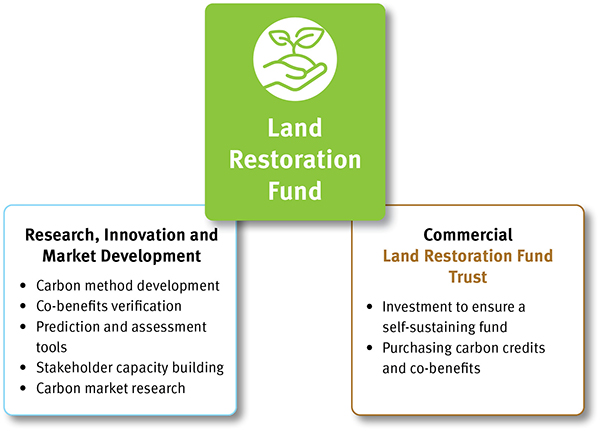The Land Restoration Fund is a Queensland Government initiative with a $500 million investment into carbon farming projects that will deliver additional environmental, social and economic benefits for Queenslanders.
The fund has two main purposes: to invest in carbon farming projects that deliver additional co-benefits; and to broaden the scope of carbon farming in Queensland with investments in research. Development and innovation.
The Land Restoration Fund will benefit Queenslanders through direct investment in regional economies, offering new income streams through the novel commodity of carbon credits. It also benefits the state’s broader objectives by supporting improved environmental health, social outcomes for First Nations peoples, and jobs in regions.
Global warming is an issue for all Queenslanders, especially our primary producers on the land working with nature. The carbon farming industry is an important part of Australia’s transition to match the threat of global warming. It will help our economy shift and our primary producers shift. The direct benefit of investment in regions means jobs for Queenslanders, and it also will support healthier soils, underpinning the vital agricultural production of Queensland, improve water quality running into our great barrier reef and other wetlands, and support our unique biota.
The Land Restoration Fund works by leveraging Australia’s carbon market, which is primarily controlled by the Commonwealth Government. The Clean Energy Regulator in Canberra controls the issuance of Australian Carbon Credit Units, and Land Restoration Fund projects will register with the Clean Energy Regulator to generate those Australian Carbon Credit Units.
There are three broad types of methods that are eligible for Land Restoration Fund projects. These are agriculture, vegetation and savanna burning.
Agriculture methods are focused on reducing emissions from things like fertiliser use or the enteric fermentation from ruminant animals like cattle, and they can also sequester carbon, story carbon in soil in agricultural systems.
Vegetation methods are mostly about regrowing or not clearing native vegetation, so you can have environmental plantings or human induced regeneration of native forests.
And Savanna burning methods and projects are focused on reducing the extent of land dry-season wildfires, which release really potent greenhouse gases like nitrous oxide and methane, by putting in earlier dry season fires to reduce the risk of those late fires.
The Land Restoration Fund differs from the Emissions Reduction Fund in that it’s not focused on lowest-cost abatement, but it values the additional co-benefits that projects produce.
The Land Restoration Fund uses the structure of the Emissions Reduction Fund to let projects generate Australian Carbon Credits; we simply replace the Commonwealth as the buyer of those Australian Carbon Credit Units, and we differ from the Emissions Reduction Fund also in the fact that we consider the co-benefits that come from projects – priority co-benefits for Queensland like improvements to our biodiversity, cleaner water running into the GBR and new opportunities for First Nations and other regional economies.
So we value the benefits that come from Land Restoration Fund projects but we’re using the carbon crediting mechanism that comes from the Emissions Reduction Fund.
Put simply, it’s just a higher-value type of project that the Land Restoration Fund is investing in.
For more information, visit the Land Restoration Fund website.



